
The Super Robot Wars: Original Generation saga is way bigger and more complex than you think
Whenever a new Super Robot Wars title gets revealed these days, I go through an odd cycle of emotions. On one hand, I’m very happy that this long-running franchise that I love is now getting official worldwide simultaneous releases which began with its 30th anniversary entry, Super Robot Wars 30, in 2021. It was once deemed impossible, since most of the SRW games are various, numerous, iconic mecha franchises crossing over with one another, which inherently makes the foundation of SRW a licensing nightmare to release in international territories.
While I’m overjoyed that this strategy RPG series has finally achieved this miraculous milestone, I do worry that this worldwide focus will potentially dilute the pool of eligible series. It’s too early to come to this conclusion though, since SRW 30 and the upcoming Super Robot Wars Y are the only entries that’ve experienced this approach. The previous SRW trilogy of V, X, and T did receive official localizations in other languages, but they weren’t distributed worldwide. For instance, their English releases were only meant for Southeast Asian markets - though they could easily be digitally imported; I don’t know if the series selected for these entries would’ve faced additional obstacles if they were meant to be released for markets across the globe.
Nevertheless, I’m already rambling and that’s not the primary reason why I start getting complicated feelings whenever a new SRW is announced. There are certain, specific games in the SRW series that carry the Original Generation (OG) moniker. This is meant to convey that every single character and unit in that game are all original; none of them belong to another anime, manga, and so on. That’s right - no Gundam, no Mazinger, no Getter Robo, no Macross, and such.
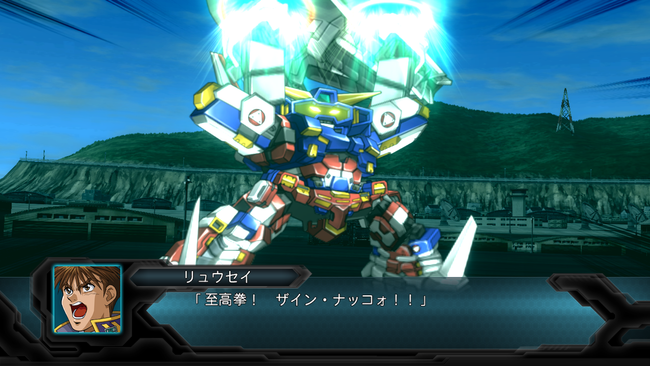
Believe it or not, these games kick immense ass. Part of what makes the SRW OG games so compelling is that it allows the development team to flex their creativity in building a comprehensive world setting, establishing a character roster with no restrictions in adhering to a pre-established intellectual property, and crafting an army of unique mecha that find the right balance between design nods to other iconic giant robots while doing their own thing altogether.
As much as I love the SRW OG series of games, it has increasingly felt like a dying star as time marches on. Its last installment, Super Robot Wars OG: The Moon Dwellers, was released back in 2016, and there have been no signs or hints that Bandai Namco intends to greenlight another entry.
Numerous factors feed into the SRW OG conundrum. Amusingly enough, the most apt comparison would be where Nihon Falcom’s Trails series found itself roughly a decade ago, when Trails in the Sky SC was barely coming out in the west for the first time. The OG saga consists of many games that are all interconnected, and many of them never got official English releases. They are all spread out between three generations of consoles, along with the fact that the vast majority of them never got a remaster or re-release of any kind after their initial release. Furthermore, each of them are fairly lengthy games, so their scripts are gigantic. This is a simple summary of the challenges SRW OG faces when it comes to re-introducing it to the modern era, but I’d like to dive deeper to illustrate a better picture of how this series got here.
The first Super Robot Wars: Original Generation (OG1) game arrived in 2002 for Japan on the Game Boy Advance, and it would later become the first SRW entry to receive a western release. Atlus brought it to North America in August 2006, and 505 Games released it in Europe the following year; these western releases were titled Super Robot Taisen: Original Generation.
Although none of the people or giant robots hailed from another property, many of them already carried a pre-existing lineage. The SRW OG franchise is a crossover series in its own way; it is a vessel that amalgamates original characters that previously debuted in earlier SRW entries, as well. To put this into perspective, the two main characters in the first two Original Generation entries were Ryusei Date and Kyosuke Nanbu.
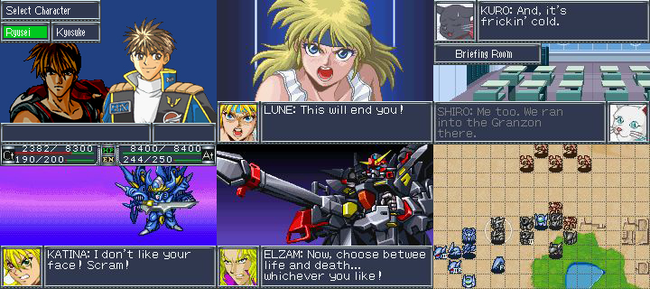
Ryusei originally made his first appearance in Shin Super Robot Wars all the way back in December 1996 on the original PlayStation, while Kyosuke arrived four years later through WonderSwan's Super Robot Wars Compact 2. Other side characters in the first installment of SRW OG, such as Masaki Andoh and Shu Shirakawa, already cemented themselves as the first original characters created for the SRW franchise when they entered the series in 1991’s Super Robot Wars 2.
I want to make it crystal clear that the SRW OG games aren’t some sort of follow-up or sequel to earlier SRW entries. You do not need to play Shin SRW, SRW Compact 2, and SRW 2 to learn who Ryusei, Kyosuke, or Masaki are to understand their storylines in the first SRW OG game. They are given a proper introduction, as if this was the first time they appeared in the SRW franchise. The continuity of the SRW OG saga is completely separate from the other titles where these characters, as well as many others, originally came from.
Without getting too into the weeds, the SRW OG project was an ambitious endeavor. It re-introduced numerous previous original characters and carefully expanded their storylines to integrate them with numerous other original characters’ plotlines to form a new, complex, and shared world that they would all live in together. The result was a persistent, multi-generational line of games with multiple different protagonists and a rapidly growing cast to keep track of.
To provide a more concrete example, the core storylines of the first two installments of SRW OG together adapted, combined, and streamlined narrative elements of SRW 2, SRW Alpha 1/2/Gaiden, SRW 3, SRW A, and SRW Compact 2. In SRW 2 and Alpha 1, the premise revolved around Bian Zoldark establishing the Divine Crusaders military organization to repel an incoming alien threat from outer space. He commandeered the effort in reverse-engineering the aliens’ technology to create Extra-Over Technology that humanity can utilize against them, which is then the main technology in the SRW Alpha universe to create central setpieces from other licensed series, such as the massive SDF-1 Macross battleship.
Bian undergoes a similar arc in the SRW OG universe, but the discovery and advancement of Extra-Over Technology drives the R-Series of units that Ryusei’s route delves into. Ryusei, along with his fellow co-pilots Raidiese and Aya, pilot units R-1, R-2, and R-3 respectively; they would later combine into the mighty Super Robot X-Type (SRX) much like how the Power Rangers would drive their own mechanical vehicles to combine into the Megazord.
Uneasy alliances, tense betrayals, and dedicated character arcs - the SRW OG series oozed political drama. Each title was always full of fun character interactions and incredibly exciting showdowns executed in a way that only the mecha genre of anime could pull off.
Of course, a plethora of other storylines are progressing alongside the main story too. Every single player of the SRW OG games has their favorites, and the series does a great job giving the majority of its cast a moment to shine when their plot arc becomes relevant in the greater main story. I personally love Kyosuke’s rivalry with Axel, Sanger’s personal journey, Latooni’s character growth, Kusuha’s ongoing hazardous health drink gag, and the list goes on. There’s so many cool characters the OG games make you care about.
Anyway, I need to keep myself in check. It’s difficult not to just write endlessly about why all the characters I like are freaking awesome.
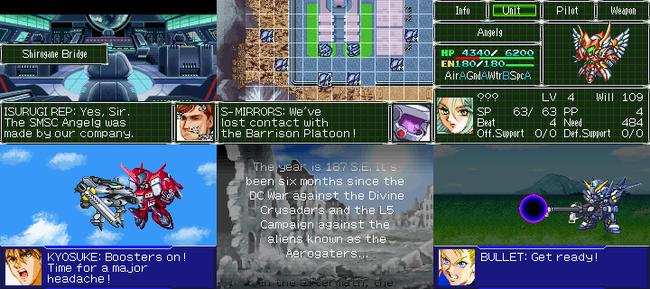
Super Robot Wars: Original Generation 2 (OG2) on GBA was released in 2005 for Japan - three years after the first installment. While both OG titles on the GBA were meaty, they were two sides of the same coin. SRW OG2 is the second half of the story that OG1 established; it concludes the primary conflict of its story. This title was also released in western territories, as the same previous western publishers brought it over to North America and Europe throughout 2006 and 2007.
Realizing the potential of both Original Generation games, the developers at Banpresto decided to release a full remake of OG1 and OG2 on the PlayStation 2 in 2007. Both were bundled together under one release titled Super Robot Wars OG: Original Generations (OGs). Utilizing the more powerful hardware of the PS2, both games were built from the ground-up with new sprite models, more elaborate battle animations, and voice-acting for battle scenes. Each game’s stories contained more sophisticated character interactions, thanks to the relatively more powerful capabilities of the PS2 - especially when compared to the GBA. Plus, a brand-new “Original Generation 2.5” scenario was included in SRW OGs that served as a “preview” version of OGs’ sequel released later that year, Super Robot Wars: Original Generation Gaiden (OGG). Think of the 2.5 scenario as a sample platter, while OGG was the full plate.
Frankly, I consider SRW OGs one of the best remakes in gaming ever. Seeing how much both OG1 and OG2 improved from GBA to PS2 was downright stunning and inspiring. The mechs felt even more expressive and cooler than ever, thanks to the added intricacy onto the choreography of their battle animations and their now voiced pilots providing an even deeper level of intimacy to the action. Additionally, OGs added the new Twin Battle mechanic that opened the way to even more complex strategies since units could now pair with one another to attack together. The OGs package altogether would last the average player easily over 100+ hours, because of the immense amount of content packed into it. There were several story revisions, retcons, and additions from its GBA counterparts that served to set the stage better for future SRW OG installments.
This amazing PS2 remake with the definitive version of OG1 and OG2 never received an official release in the west, unfortunately. It luckily did receive a full English fan translation at the tail end of 2020; I imagine it was an immense, and obviously timely, endeavor. Thank you to the talented individuals and all the contributors that made that whole project a reality. If you are even remotely a fan of the mecha genre, strategy RPGs, and/or an intricate story with a compelling cast driving it, I cannot recommend SRW OGs enough.
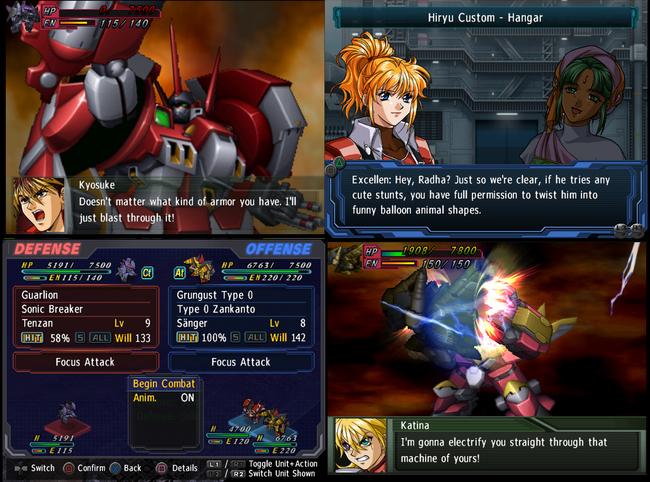
It’s worth noting that the stories of OG1 and OG2 received anime adaptations through Super Robot Wars OG: Divine Wars in 2006 and Super Robot Wars OG: The Inspector in 2010. I consider both subpar substitutes, and Divine Wars’ visuals haven’t aged gracefully. The Inspector is an incredible mecha anime show to watch, though; I highly recommend giving that a watch if you’re curious, but my personal recommendation is to watch that after playing the games.
Complementing the release of SRW OGs near the start of 2007, SRW OGG launched near the end of 2007. It was the direct sequel to SRW OGs and naturally, the first Original Generation entry to be released only on a console platform. While the casts of OG1 and OG2 are still actively present in OGG, several new characters introduced in the 2.5 scenario of OGs are the main focal points of it.
Much like many of the original characters in OG1 and OG2, the characters in OGG have shown up in other prior SRW entries which include Raul and Fiona in SRW R, Folka in SRW Compact 3, and Hugo in SRW MX. Kouta and Emi, unlike the rest, debuted in a separate Banpresto-developed property called The Great Battle, which was a part of their Compati Hero franchise.
The other protagonist of SRW MX, Aqua, makes a cameo appearance in OGG, along with one of the three protagonists of SRW Alpha 3, Touma. These two would be more prevalent in the next mainline SRW OG entry after OGG.
Once again, OGG was another entry in the SRW OG series that did not receive an official release in the west. It currently does not have a playable fan translation at the time of this writing. There are other ways to see the story in English though; some walkthroughs of OGG provide English summaries of the story events, and I know of at least one YouTube channel that has implemented English subtitles in their OGG Let’s Play series. Nevertheless, both avenues are less ideal than just playing the game seamlessly from start to finish.
While I didn’t get the opportunity to play OGG till several years after its release, I vividly remember watching several “music-anime dougas” (MADs) that highlighted some of the incredible battle animations in it. I imagine that many western SRW fans either discovered SRW, or developed an interest in SRW, thanks to the talented creators of these MADs. Western culture may know these styles of videos as “anime-music videos” (AMVs), instead; MADs and AMVs do carry some stylistic and cultural differences in how they’re presented, but both terms align conceptually. Personally, I know several people found out about the SRW series through SRW Alpha 3 MADs that showed off the units from Neon Genesis Evangelion, Gunbuster, and Gundam SEED. It was surreal and novel seeing a video game fostering a crossover with some of the most beloved series of that era.
The mainline SRW OG series would enter a lull period after OGG. Its next entry wouldn’t come for another five years on the PlayStation 3, though the release of new SRW OG games didn’t entirely come to a halt.
SRW OG would return to a handheld platform in May 2008 with the release of Super Robot Wars OG Saga: Endless Frontier for the Nintendo DS. Atlus surprisingly brought this to North America in April 2009, but it received no official release in Europe. Endless Frontier was a spin-off of the SRW OG series that featured an all-new cast of main characters. Though its plotline didn’t directly affect the overarching story featured in the prior OG installments, Endless Frontier did provide further canonical background information on several groups featured in them, such as the Shura, Einst, and Shadow Mirror.
Additionally, Endless Frontier did feature some crossover cameos from other Namco properties. Namco X Capcom protagonists Reiji and Xiaomu were playable characters, as well as Xenosaga’s KOS-MOS. Unlike the main SRW OG games, Endless Frontier was not a strategy RPG. It featured turn-based battles with a column of up to 4 active party members, and each battle sequence involved players inputting commands to combo juggle an enemy for as long as they can to maximize damage - much like how Namco X Capcom, and the later Project X Zone games handled them even though they were strategy RPGs.
Those who played Endless Frontier may still be scarred from the phrase “Forced Evasion”. This diabolical mechanic punished players who dropped their combo juggles, either from misinputting or mistiming their next attacks. If certain enemies touch the ground at any point of an attack sequence in Endless Frontier, the Forced Evasion mechanic will come into effect that will automatically make all future attacks in that combat sequence miss, so it immediately ends that character’s turn. Forced Evasion was frequently used with reckless abandon in the later parts of Endless Frontier, which extended battle encounters and would often swing the momentum in the enemy’s favor as a result of tiny mistakes on the player’s end.
Two of Endless Frontier’s main characters, Haken and Aschen, would eventually enter the mainline SRW OG games in its most recent entry, SRW OG: The Moon Dwellers. While it isn’t strictly necessary to play Endless Frontier to understand the overall story arcs that would unfold in later OG entries, I’d still recommend it simply because it’s a fun ride with an unconventional, but satisfying combat system. Plus, Endless Frontier was one of the few SRW OG games to receive an official English release - and it would be the last time a SRW OG game of any kind would be officially released for the west.
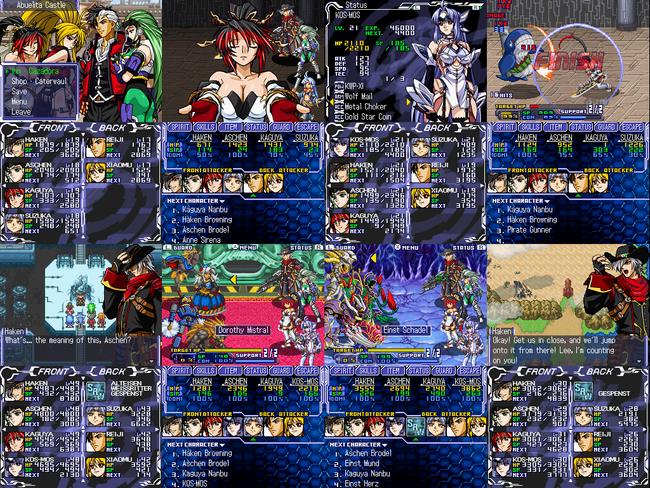
Endless Frontier received a sequel two years later with Super Robot Wars OG Saga: Endless Frontier Exceed. Unlike its predecessor, it wasn’t brought over to the west. Endless Frontier Exceed did get a full English fan translation in October 2019. Once again, a major thank you to all the individuals involved with that project.
Endless Frontier Exceed featured new main characters, but the entire cast of the first Endless Frontier installment (including the crossover characters) were still present for it. The new crossover characters from the mainline SRW OG games in Exceed included Axel, Alfimi, and Fighter Roar; Xenosaga’s MOMO also hopped into the fray, as well.
Exceed retained the gameplay formula from the first Endless Frontier, though several key enhancements improved some of the previous game’s downfalls. Forced Evasion was now tied to a meter, so enemies could no longer freely spam it, and people had more leeway to make errors in their combo sequence. Players could also now employ a Forced Evasion of their own against the enemy. Of course, returning characters had new attacks and abilities.
Another SRW OG Saga spin-off for the NDS released just three months after the launch of Endless Frontier Exceed in Japan. Super Robot Wars OG Saga: Masou Kishin - The Lord of Elemental was a remake of 1996’s Super Robot Wars Gaiden: Masou Kishin - The Lord of Elemental that was released on the Super Famicom. If you wanted to be technical, the 1996 game is technically the first SRW game to fully feature only original characters that weren’t tied to a pre-existing external intellectual property, and predates SRW OG1 on GBA by a considerable margin.
These “Masou Kishin” entries in SRW entirely focused on the world of La Gias where Masaki and Shu come from. La Gias itself isn’t located on an entirely different planet or dimension; it’s a hidden land located deep within the Earth itself. Those jumping into this game directly from the SRW OG series will notice that almost the entire cast is composed of new characters that haven’t shown up in SRW OG at all. Aside from Masaki and Shu, the only other recognizable character is Lune.
Though it is a strategy RPG like SRW OG, Masou Kishin contains a lot of unique mechanics that make it a different experience altogether. Players can control where a unit faces after it moves, because positional damage from the sides and back have accuracy and evasion penalties. Elevation plays an important factor in those calculations too, along with an elemental weakness system that is common in other fantasy-themed RPGs.
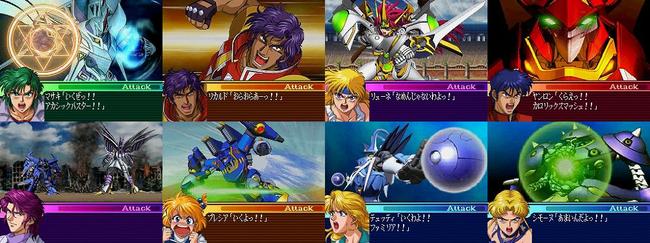
Furthermore, its visual presentation was quite different from SRW OG. Mech models had realistic proportions instead of the SD (super deformed) style, and battle encounters featured a tilt-shifted view to simulate the mechs staring each other down in a 3D space, instead of the flat 2D plane in most other SRW games.
At the start of 2012, the sequel to Masou Kishin arrived with Super Robot Wars OG Saga: Masou Kishin II - Revelation of the Evil God. This sequel was only released for the PlayStation Portable and it included an enhanced port of the NDS remake of The Lord of Elemental. The previous game’s PSP version now had voiced combat dialogue for everyone, even for those that were previously unvoiced. Several refinements to the visuals and dialogue were made, thanks to the more capable PSP hardware.
Masou Kishin II was one of the most long-awaited sequels in the SRW franchise, since it finally continued the storyline that was established in the 1996 release of The Lord of Elemental. This game featured a fairly robust branching scenario system, where specific triggers caused different missions to pop up. One of the more amusing branching paths involved whether the average level of your male pilots were higher than your female pilots, or vice versa; these led to different stages, for example.
Both aforementioned Masou Kishin games did not receive an official release in the west. The 1996 Super Famicom version of The Lord of Elemental did receive an English fan translation patch in September 2018; a big thanks to the people involved that released it several years ago. Meanwhile, Masou Kishin II received a partial, rudimentary English translation for the story scenes in-between battles on a separate wiki-style fan site. It’s still incomplete though, and I’m unsure if it’s still regularly updated.
While the majority of the stories in the Masou Kishin games are self-contained and aren’t crucial in understanding the overall main stories that occur in the SRW OG games themselves, they do establish a lot of the characterization for Masaki, Shu, and Lune. The most direct link between the Masou Kishin and SRW OG games would surface when the next mainline SRW OG game would release, at long last, in November 2012 for the PS3.
After half a decade since SRW OGG, the next main title launched. It was titled The 2nd Super Robot Wars OG (2ndOG). Those that didn’t know the SRW OG series would be forgiven in their confusion between OG2 and 2ndOG, especially those in the west that never received the SRW OGs remake. Of course, OG2 and 2ndOG are two completely different games - despite the very similar naming scheme.
I personally consider 2ndOG one of my favorite PS3 games, and it might just be in my top 10 games ever if I were to ever create one. The jump in visual fidelity, art design, sound direction, and overall presentation from SRW OGs and OGG were unreal. When the first trailer for 2ndOG dropped, I’m confident that at least 90% of SRW OG players’ jaws dropped to the ground. It was a phenomenal debut trailer that immediately conveyed that this next title in the SRW OG series was going to be something special.
2ndOG exhibited every enhancement you would want out of a new SRW OG title in the first HD era of video games. Its models were built with the stronger PS3 hardware in mind, and the massive increase in resolution made everything look much crisper. This would also be the first main SRW OG title to be developed for 16:9 aspect ratio displays, so attack animations had more screen space to work with; this resulted in a lot more dynamic camera angles utilized to increase the impact of attacks.
This was a narratively ambitious game, as well. After the first two stages, 2ndOG immediately offers players to either play through Masaki or Lune’s route for the next 15 stages because the first quarter of this game is primarily spent in La Gias. This early focus on La Gias adapts the events of SRW EX, and Masaki’s route in particular ties into Masou Kishin II.
Additionally, 2ndOG concludes the rest of the story arcs adapted from SRW Alpha 2 that were introduced, and gradually progressed, throughout OG1, OG2, and OGG. So the main character spotlight is a bit of a revolving chair in 2ndOG because in the beginning, it could be Masaki or Lune - but deeper into the game, there are points when it’s Ibis, Kusuha, Sanger, or Arado as the main focus.
The 2ndOG protagonist's seat doesn’t stop at them, though. Hugo, who was introduced in SRW OGG, is now reunited with the other protagonist of SRW MX, Aqua. So, Hugo and Aqua take up a chunk of OG2nd’s stages as the events of SRW MX are adapted in the SRW OG universe. SRW D’s main characters Joshua and Cliana make their debut, so 2ndOG also goes over the events revolving around the original characters of that earlier entry too.

As I mentioned earlier, Touma makes his full debut in 2ndOG after a brief appearance in OGG. He is one of the three selectable main characters in SRW Alpha 3, but the events of Alpha 3 don’t come into play quite yet because of how OG2nd is still working through Alpha 2’s remaining plotline. The scriptwriters decided to allocate the first half of Touma’s Alpha 3 storyline into OG2nd, which I always thought was an interesting decision. I’m not complaining, because that meant his kickass scarf-wearing Lioh robot got a HD model and its attacks look freaking spectacular in HD.
Plus, 2ndOG included Ariel and Duvan from Real Robot Regiment - another separate game developed by Banpresto. I’m not quite sure of the exact reason why they were included in 2ndOG, since the game itself didn’t have any plot threads for Real Robot Regiment. It may have just been a way to celebrate that title, because it was the first Banpresto game to be released on PS2.
If 2ndOG had a “main protagonist”, the closest character to fill that role would be Ing. He originated from a sequel manga to Alpha 2, titled Super Robot Wars Alpha 2: Lost Children. The major antagonist of 2ndOG directly ties into Ing’s personal storyline, and a lot of the significant turning point events in 2ndOG concerns Ing.
2ndOG… was one hell of a video game. It felt like it made no compromises when going from the PS2 to the PS3, and aimed to make everything bigger and better than its predecessors. Almost the entire returning cast of OG1, OG2, and OGG were playable, and a good chunk of them either received new attacks or new animations to some of their existing attacks.
While there weren't many gameplay advancements from OGs and OGG, 2ndOG had a lot of unlockable secrets. The most significant one was the Secret True End route that consisted of four additional stages, instead of the standard final two stages in the Normal End route. Forte Gigas from SRW D had multiple easy-to-miss triggers to unlock it. Masaki, Lune, and Sanger got unlockable extra attacks by meeting certain conditions. There were a plethora of secret unlockable, swappable weapons and equipment throughout this entry, though OGs had its fair share of this.
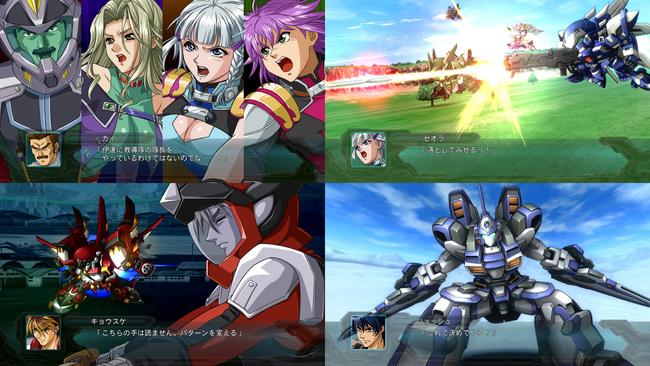
You probably already know what I’m about to say next. 2ndOG did not receive an official release in the west. Its entire story did receive an English fan translation hosted on a separate site, thanks to the titanic effort of a dedicated fan, and potentially several other contributors that helped them refine their translation over time. Even if it isn’t ideal, I would heavily recommend using that site to understand 2ndOG’s story as you play, if you can’t read Japanese.
Following the release of 2ndOG, the Masou Kishin series moved onto its third entry with Super Robot Wars OG Saga: Masou Kishin III - Pride of Justice on the PS3 and PS Vita; it launched in August 2013. This entry unsurprisingly didn’t get a western release, and there aren’t any English fan translations that exist for its story at the time of this writing.
Three months after Masou Kishin III, the SRW OG series released yet another spin-off at the end of November. Super Robot Wars OG: Infinite Battle is a real-time 3rd-person action game that does not tie into the overall story of SRW OG at all. It was an experimental title that envisioned how the SRW OG units would operate with real-time combat. The roster size was fairly sizable with a grand total of over 40 playable units, though I found that the poor visuals, clunky controls, and repetitive combat didn’t make it particularly exciting to play.
Purchasing the limited edition of Infinite Battle came with 2ndOG’s canonical story DLC campaign, titled The 2nd Super Wars OG: Dark Prison. It would eventually be sold separately in April of the following year. The events of Dark Prison happened in parallel with 2ndOG, as it starred Shu taking center stage as the protagonist. Selena, another protagonist from SRW Alpha 3, made her debut into the SRW OG universe with Dark Prison. Both Infinite Battle and Dark Prison didn’t get a release in the west; surprise, surprise. I’m aware of one YouTube channel that did a narrated Let’s Play for Dark Prison that provided what’s being said in English, at the very least.
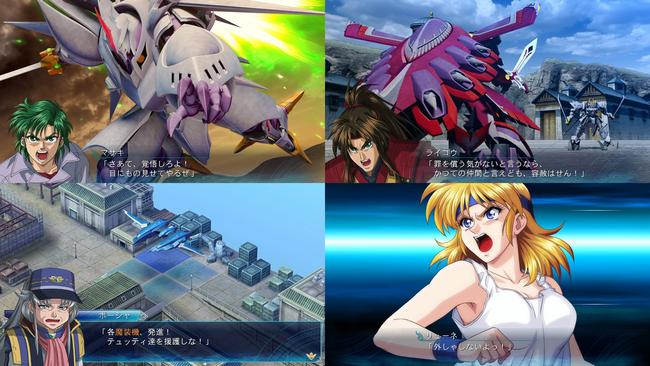
August 2014 brought about the finale of the Masou Kishin series with Super Robot Wars OG Saga: Masou Kishin F - Coffin of the End on the PS3. Same similar deal here; no official western release, no playable fan translation, and not even an external English translation of its script.
This finally brings us to the latest entry of the mainline SRW OG series. Super Robot Wars OG: The Moon Dwellers arrived at the end of June 2016 in Japan on PS3, and two months later on PS4. What’s significant about this installment is that the PS4 release also launched in Southeast Asian territories, and that version had an official English localization in it. This would be the first time since 2009’s North American release of the first Endless Frontier that a SRW OG title received an official English release - albeit not exactly meant for western territories.
Unfortunately, the quality of the English localization in the Moon Dwellers was… less than stellar to put it lightly. It got understandably lambasted for stiff lines, frequent typos, and inconsistencies with its in-world terminology. I would still consider it largely serviceable, but I do agree with the criticism it received; people were understandably disappointed because they cared about it. One of the most well-known images of Moon Dwellers compiled some of the most egregious mistakes in its English script.
Returning western SRW OG fans must’ve been lost narratively, since so many games have gone by without an official English release. The last time they experienced the main SRW OG plot through official releases up to this point was through the obsolete GBA release of OG2 that Atlus and 505 Games brought over. There was an in-game menu option that briefly summarizes the highlights of the SRW OG story up until the beginning of Moon Dwellers, but it wasn’t an adequate substitute at all.
Imagine if Nihon Falcom’s Trails series stopped getting regular English releases after Trails in the Sky SC. Multiple years pass by as more of them get released only in Japan, and then somehow, Trails into Reverie happens to be the next Trails installment to get an English release… but only in Southeast Asian markets. That's basically the closest parallel to what happened to the English release of the SRW OG series at this point.

The primary protagonists in Moon Dwellers were Touya and Calvina, who both were the main characters of SRW J. I recall the developers positioning Touya as the route for “SRW OG newcomers”, while Calvina was recommended for “SRW OG veterans”. Touya had more of an outsider’s perspective getting eased into the cast, while Calvina’s plotline was more involved with the greater worldview of the SRW OG series. I don’t think this angle was still sufficient enough for players to get caught up to speed, and I’m not sure any narrative shortcut could make up for the vast gap after many prior interconnected games.
Akimi and Akemi from SRW GC make their first appearance in the SRW OG universe in the Moon Dwellers, as well. As I mentioned way earlier, Haken and Aschen from the Endless Frontier series are also playable in this installment too.
Although the jump in visual fidelity wasn’t as striking as going from OGs/OGG to 2ndOG, Moon Dwellers’ PS4 version did look considerably better than its aging PS3 counterpart. A lot of assets from 2ndOG were understandably reused and touched up.
Many Moon Dwellers players felt that its narrative scope felt more like a “gaiden” or side-story, rather than a big push that brought the entire setting of the SRW OG universe to the next stage. Aside from its inclusion of adapting the plotlines of SRW J and SRW GC, it made a few baby steps in advancing the SRW Alpha 3 plotline through introducing more of Selena’s background. I consider Moon Dwellers an okay entry overall, but certainly a step below 2ndOG.

After Moon Dwellers, there has been no new installment in the SRW OG series - neither mainline, nor spin-off. The recent SRW V, X, T, and 30 entries all contained small cameos to some extent. SRW V featured the Grungust and Huckebein units, SRW X had Masaki with his Cybuster, and SRW T included the Gespenst unit. Meanwhile, SRW 30 included quite a handful of SRW OG characters throughout its base release, two DLC packs, and Expansion Pass, including the original two protagonists of OG1 - Ryusei and Kyosuke.
The SRW DD mobile game has continually teased the return of SRW OG in small ways. In March 2022, it received a new episode that was considered a canonical part of SRW OG’s storyline, as it expanded upon one of the key events that happened in 2ndOG. It revolved around Armala annihilating all the Huckebein prototypes in that entry, but the last remaining Huckebein and its pilot, Shizuki, had their story told in that new SRW DD episode.
Another story nod to SRW OG was made in SRW DD in October 2024. It received a side story that involved one of SRW OG’s more prominent side characters, Ring Mao, rebuilding the Huckebein 008L model into the Huckebein 02 equipped with the Full Armed pack. SRW DD also followed up on the events from March 2022, as it confirmed that the last remaining Huckebein prototype survived; Shizuki makes her return, as well.

I’m not sure what the future holds for the SRW series, if there is any future for it at all. It’s been almost ten years since the release of Moon Dwellers. The biggest public champion of the SRW OG series, now ex-SRW series producer Takanobu Terada, left Bandai Namco Forge Digitals (formerly B.B. Studio aka Banpresto) in December 2021. He stated that he would still be involved with SRW in some capacity as a supervisor, instead of a series producer.
It is undeniable that he seemed to have the biggest sway internally at Bandai Namco for getting SRW OG projects greenlighted. I’m not sure if there is anyone else internally at the moment that holds the same kind of influence, and love of the SRW OG series, that Terada had.
The SRW OG series is in a tricky spot right now, since the SRW games that do contain licensed series demonstrably do financially better because they contain series and intellectual property that are recognizable to a wide audience. Why allocate resources to new SRW OG projects, when those could be spent making ones with licensed properties instead?
.png)
Now, the SRW OG games have found themselves in an awkward position. If Bandai Namco were to release the long-awaited next mainline entry in the series, who would buy it - especially if it were to be released internationally like recent SRW games? There have been so many SRW OG entries that didn’t receive an official western release, and it would probably be a good idea to have, at the very least, all the mainline games receive modern re-releases on multiple platforms.
This would require an extraordinary amount of resources and time to pursue. I would love it if they did, but I can’t exactly blame Bandai Namco for being reluctant to do so. Sure, it would’ve been nice if the higher-ups almost two decades ago decided to greenlight an official western release for SRW OGs that could’ve marked a turning point in history for this series, but that time has long gone by.
I desperately want a bright future for this series I love, and I’m a little sad that I don’t know how to make that possible. It is a niche within a niche, and I hope this comprehensive overview of the SRW OG saga has helped shine a light on it.